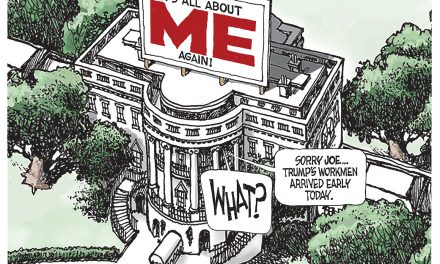In response to several emails and calls asking for more information about how fairness could be injected into the current tax system, here’s our observations.
Memphis is unique in its place as one of only a few metropolitan areas – underline metropolitan – that has such a complex web of economic, social, and physical conditions associated with concentrations of poverty and its attendant problems. Addressing these and other issues is complicated by the lack of a coherent philosophy of public funding. What is needed is a fiscal equity study that becomes the blueprint for a taxing philosophy that is sound, equitable, and logical.
In Shelby County, population movement has resulted in shifting revenue and expenditure patterns, and because of this, the questions that need definitive answers are:
1) Who pays?
2) Who benefits?
3) What is the most equitable philosophy of funding public services?
The overwhelming majority of citizens in Shelby County pays taxes to a municipality, and every one pays taxes to county government. It is the disparity between county services paid for and county services received that create inequities for Memphis taxpayers.
At the heart of the problem is the lack of coherency in county tax policies. Shelby County’s rationale for service delivery is – and has been for 15 years – schizophrenic and confusing to the people who pay its costs. For example, county government delivers some services countywide, such as public health and criminal justice. For some cities, it provides fire protection and law enforcement. In others, it provides ambulance service. Outside of Memphis, Shelby County Government pays the total cost of education, and the towns pay nothing. Outside of Memphis, it enters into partnerships with cities to help fund major road projects.
In other words, the current system lacks consistency and congruity. As a result, what is at issue is the fiscal equity achieved by the type, the quantity, and the location of county services. To determine what is fiscally equitable, an analysis is needed to answer two questions:
1) Are municipal and non-municipal taxpayers receiving their fair shares of existing county and municipal services?
2) What levels of service delivery to incorporated and unincorporated areas should Shelby County assume in order to best serve its citizens?
To get at these answers, a fiscal equity study should determine the fiscal power of the county and its cities, determine the fiscal capacity of the county and its cities, determine the fiscal demands of the county and its cities, determine the relationship between capacity and demands, determine the precise source of revenues and expenditures, determine the organization and content of ongoing policy analyses which find the most equitable and cost effective way to control funding of public projects and services, prepare case studies of comparable urban/suburban areas, and examine the relationships between county and municipal governments.
At the end of this process, for the first time in history, there could be a rational framework for what is municipal and what is regional (county). In turn, what is considered regional should be moved to the county tax base. Everything else should be left for individual cities to fund.
A fiscal equity program would likely shift many services that are now considered Memphis services to the regional tax base (Shelby County’s), and in this way, a major goal for this community would be accomplished — to lower the city’s tax rate to be more commensurate with the other municipalities of Shelby County. That is only fair, because at this time, Memphians pay a premium to live in their city.
This is especially graphic when it comes to joint city-county agencies and construction projects. On the many projects in which Memphis and Shelby County split the costs, Memphians do much more than pay its half. After all, Memphis taxpayers pay all of the city portion, and then turn around and pay 65 percent of the county’s portion. This means that overall, on these joint projects, Memphians pay 83 percent of the total costs.
Put another way, older sections of Memphis are now being asked to subsidize their own decline. The quality of the public infrastructure influences personal decisions on where to live, how far to commute and where to shop. Residents are now tempted by their own government to abandon older neighborhoods in favor of new ones, producing a decline in the quality of the infrastructure for older areas and incalculable social costs — the decline in a sense of community, the inequality caused by the flight of wealth, the inefficient use of land, and the redundancy in public investments.
In 2001, the so-called “tiny town” controversy gave our community its best chance for addressing the tax inequities implicit in the current tax system. Being negotiated at that time was a proposal to move libraries, museums, economic development agencies, most joint agencies and more to the county’s tax base. Regrettably, the political pressure eased up, and the agreement was never consummated.
Conceptually, it was designed to lower the tax rate of Memphis to a level in the same ballpark as Germantown and Collierville. But it was not to be, and the unfair tax burden for Memphians remains. In the end, ideas from consolidation to single source funding for schools may or may not be a good choices for Memphis’ future, but the real top priority is to inject some common sense into a tax structure that is, in a word, nonsensical.




